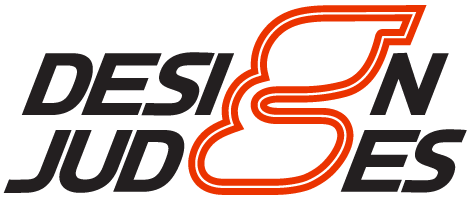Contact! Impact! Fire!
Figure 1: Results of ignition of 30 gallons of gasoline on 2nd lap of 1968 French Grand Prix. Driver Jo Schlesser was killed by this fire.
Your impact attenuator is meant to decelerate your car in a frontal collision at 20g. With either documentation or testing, you will demonstrate that yours does in order to pass technical inspection. The rest of the car is not tested, but if a front-end impact actually happened, it too would be decelerated by a force 20 times that of gravity.
Driver Containment
What will happen to the rest of your car in that crash? Let’s start with the driver. If you have a 200# (90kg) driver, they’ll exert a 4000# (18kN) force on the parts of the car that’ll be slowing them down. A free-body diagram on the belts shows that the X-component of the forces of the belts have to sum to that; the vertical and lateral forces will be determined by their directions, so the total force on the mounts will be greater.
Are you relying on a weld in tension to carry that load? Did you make any attachment out of steel thinner than 1/8” (3mm)? Is there any redundancy? A double-shear bracket and bolt assembly where each side is strong enough to carry the load in single shear gives you a factor of safety of at least 2. What factor of safety do you want?
The direction of impact isn’t always square-on in X, and the driver isn’t kept completely stationary by the belts, so what will the driver hit? Is there anything sharp that will cut them? Is the front edge of your seat a thin piece of fiberglass with a nice sharp cutoff tube behind it? Which way are the driver’s legs going, and will they have some rollbar padding to strike?
Powertrain Mounting
Unless you build a Texas A&M style “sidewinder”, the engine is right behind the driver. A ½” (12.5mm) thick Nomex sheet or .065” (2 mm) aluminum firewall won’t stop it, and nor will 1/8” (3 mm) of composites in the seat. Your engine mounts have to. A 125# (55 kg) four-cylinder would take 2500# (11kN) of force to stop in a 20g impact, a 60# (25kg) single 1200# (5kN). Since mounts are unlikely to have uniform stiffness and the engine’s weight is not uniformly distributed it will rotate during a collision – will it stay in the engine bay?
Stronger, stiffer engine mounts typically improve your chain drive’s reliability and efficiency, providing another incentive to keep the engine in place. What other heavy hardware will go flying around the engine bay in a crash? Where will your lead-acid battery end up? Mine ended up halfway across the Reed Arena parking lot when I drove over a curb.
Fuel Tank
The fuel tank is typically placed between the engine and the driver. It’s not meant to be a second impact attenuator. If it ruptures, the exhaust headers will be a very effective grate for the fire, carrying enough energy to boil the fuel and ignite it. Could your center-of-gravity location be improved by placing it somewhere else in the car? Could it be adequately protected there? Rule F.5.13 requires the tank to be protected inside the primary triangulated structure of the car. Rule IC.1.2 requires the entire system to be within the F.1.14 Tire Surface envelope. Some teams make it a policy to be even more stringent about fuel system protection.
Fuel tanks are typically made out of aluminum, welded on the edges to form a rectangular box, a grouping of bad ideas straight out of a Wile E. Coyote cartoon. Where does the fuel slosh to during cornering and acceleration, and how do you make sure you can continue to pick it up?If the edges of a tank are the areas of greatest stress concentration, then why are the additional stress concentrations of the weld geometry and weakest material in the HAZ put right next to them? What’s the fatigue endurance limit strength of aluminum? How many cycles per hour do you get with a single-cylinder engine hammering away at 10,000 RPM, and what are the other sources of stress?
A badly designed welded aluminum fuel tank is only better than a Pepsi-Cola bottle because it’ll pass tech inspection. Building a leak-free tank out of carbon fiber is not trivial but it’ll improve your knowledge of composite manufacturing. Plastic kart tanks are cheap and have a service life of five racing seasons. A good sheet pattern will let you make a tank out of one or two pieces of .049”-065” (1.2-1.5 mm) of 60 ksi / 400 MPa HSLA steel with most of the welds on overlaps and most of the corners on bends. Combine that with a small rounded bottom area and that’s a good tank. Not every design judge would say that the expense and weight penalty of a real fuel cell is worth it, but your school’s administration might be easy to convince that this is a good place for some sponsorship.
Conclusion
You can build a legal car by meeting the rules. A safe one takes good engineering, thinking about the effects of an entire situation to set the requirements for each component involved. The driving requirement for a design may come from many situations - the minimum size of an engine mount tube could be set by needing to accommodate the crushing load of the bolt that runs through it, by needing adequate lateral stiffness for chain alignment, or by needing adequate longitudinal strength in a crash. Careful selection of design features will allow one solution that meets every requirement without overdesign. Repeat it for each component you build and the mechanical design of your car will let it reach its full performance potential and gain your team’s engineers a reputation for getting it right the first time.

